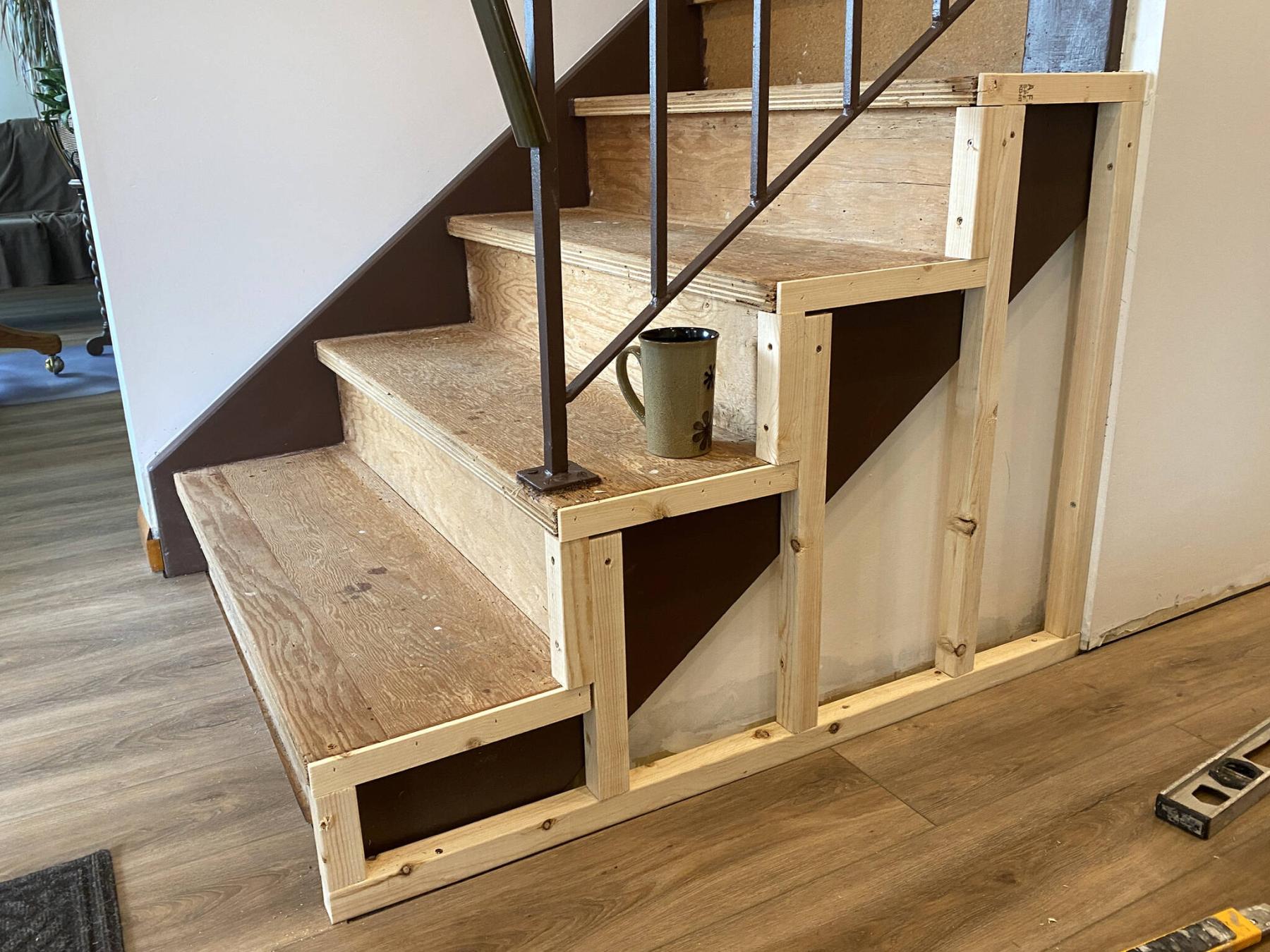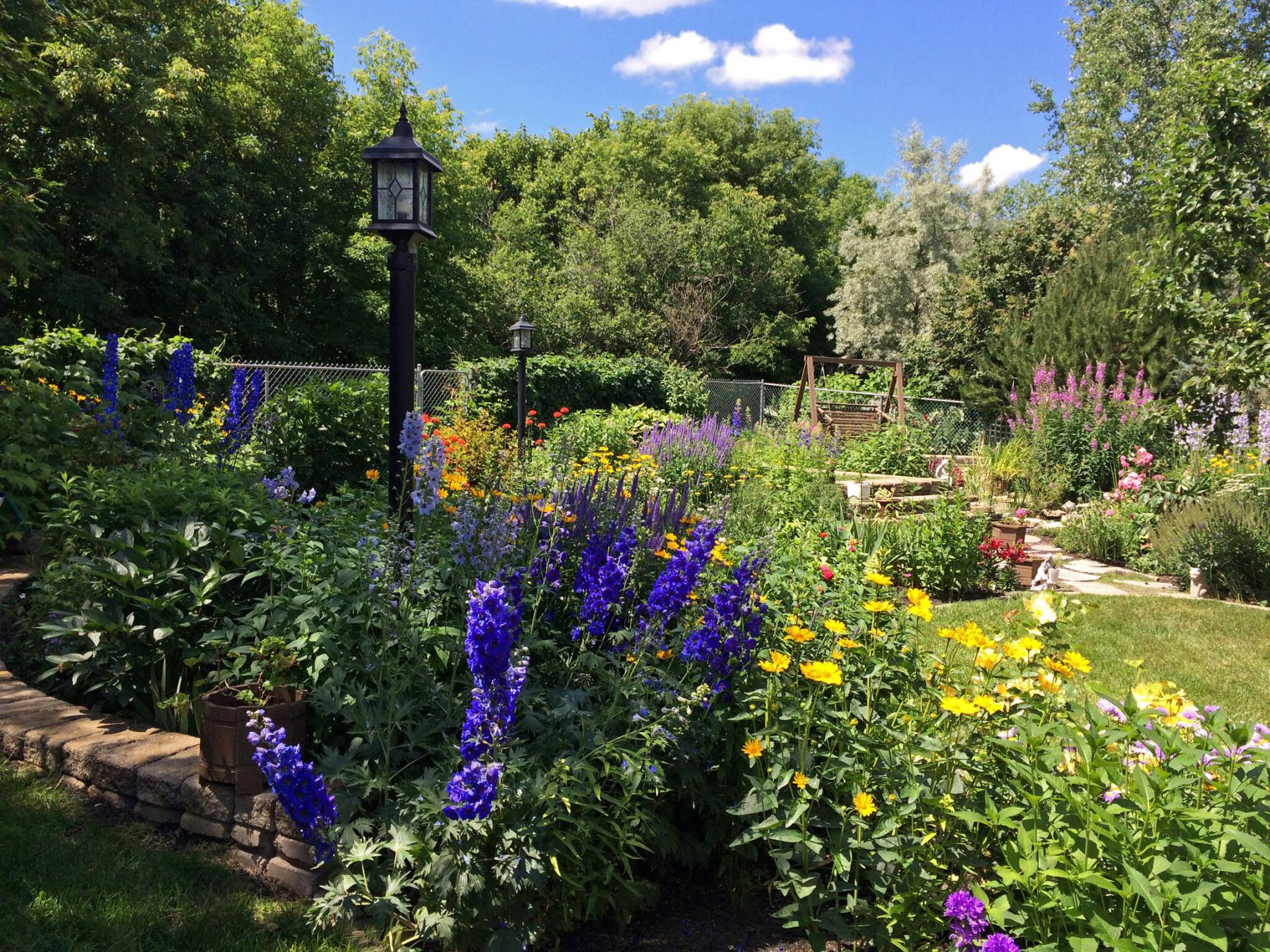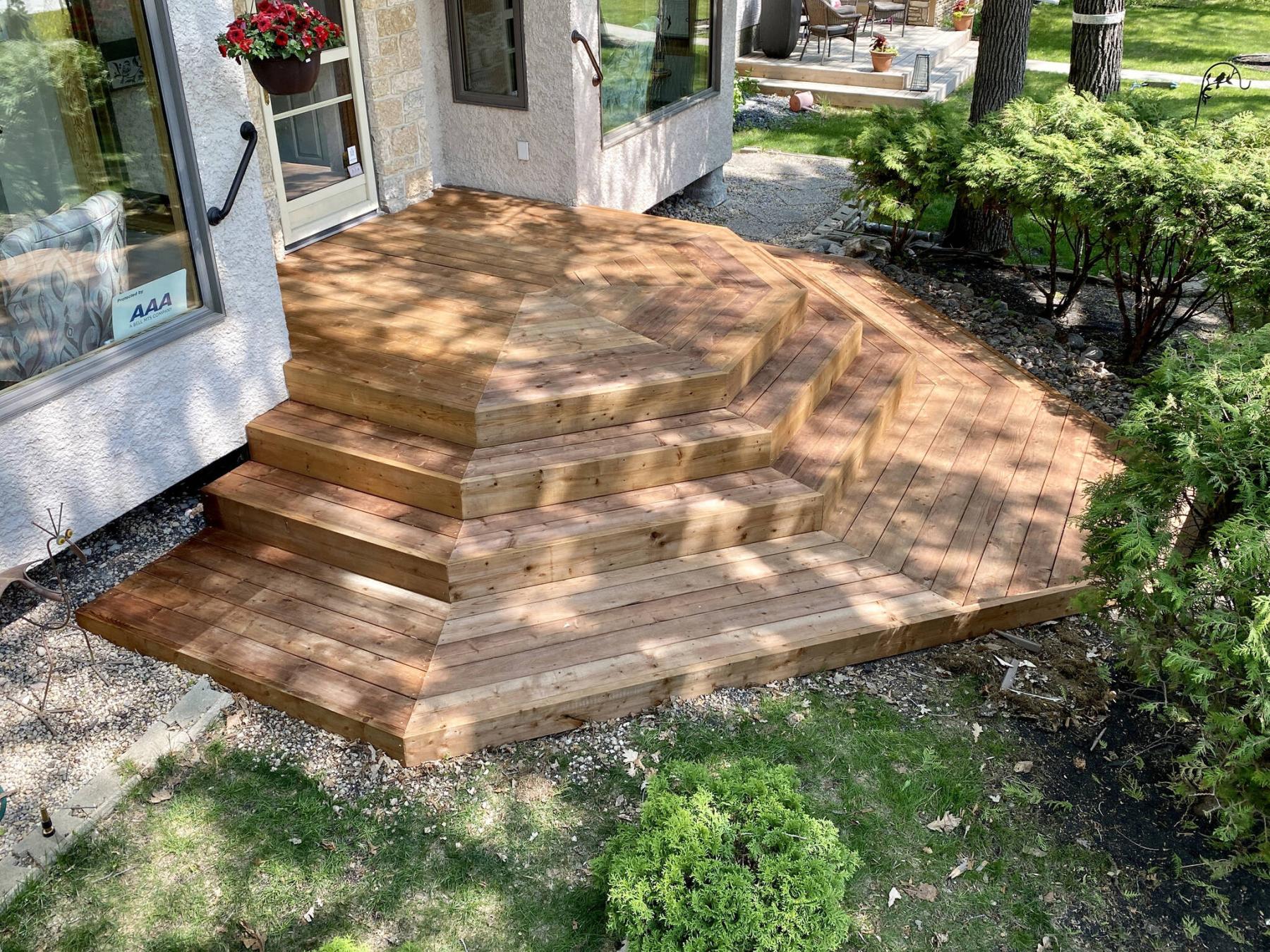Renovation & Design
Renovation & Design
Running furnace fan can help regulate temperature
Question: I have been researching this subject and came across your article on the subject. I live in Alberta and have what is referred to as a poor man’s HRV. It’s a switch located next to the thermostat, which I was told when turned on would circulate the air within the house and help warm up the basement as it draws warm air in winter and vice versa in summer. My house is 16 years old and there is a Lennox gas furnace and no central air. I leave the switch on during the winter months. Information on the internet is conflicting.
Do you have any advice you can share with me? I don’t want to use electricity needlessly.
Elizabeth Harley, Spruce Grove, Alberta.
Answer: Running your furnace fan continuously should help equalize uneven temperature differentials between various levels in your home. This won’t take the place of an HRV, but may help prevent mould growth and moisture issues due to stagnant air, as well as warm up a cool basement, slightly.
Without seeing the switch installed near your thermostat, I would guess that it simply turns on your furnace fan to run continuously. This would normally be set for a lower speed if it was integral to your thermostat, but may be set at a higher speed with the current switch. This is likely a throw-back to a time when older furnaces had simple thermostats that did not have a fan control setting. It was probably installed primarily to help push cold, basement air through the main living area. It may have been installed to help warm the basement in the winter, but could have been just as effective to prevent damp, cold air from stagnating in the lower level on hot summer days.
To compare this in any way, shape, or form with a heat recovery ventilator (HRV) is a gross exaggeration. That modern device will also move air continuously through the home through your heating ducts, as well as its own integrated pipes, but will also exhaust stale house air and exchange it with fresh air from outside. That is the primary function of the HRV, to remove excess moisture and household pollutants from the living space and replace that air with a clean, fresh exterior supply. In that way it prevents a build-up of potentially harmful chemicals, from cooking, bathing, and washing, while lowering the relative humidity in the heating season. It should only be used in the colder months, when natural ventilation is not possible, but is also connected to registers in the bathrooms that remove excess moisture year-round.
Your fan circulation switch may help prevent high moisture issues in specific areas of your home, but only by moving the air around the home. It will do nothing to promote air exchange between inside and outside. It has no means to expel contaminated indoor air, nor draw in any exterior fresh air. You will still need to use your individual bathroom exhaust fans, kitchen range hood, and open your windows for that purpose. Even with the windows open on moderate temperature days, you can still leave the fan switch on, to help prevent air from becoming stagnant in hard to reach locations.
Most modern furnaces have blowers that are designed to run continuously for the expected life of the unit, with minimal maintenance or lubrication. These are also quite efficient and don’t use a lot of electricity to run. The main costs for the heating and cooling systems are the fuel costs for the natural gas and electricity for the air conditioner condenser, not the circulation fan. It should still be serviced and cleaned regularly, to prevent damage and operate better without excessive dust and dirt on the blower. Using the wall switch to constantly run the fan should not waste an excess amount of electricity, especially if you service the furnace every year or two.
Depending on your geographic conditions, installing and using a central air conditioning unit would be a much more effective means of preventing moisture issues in your home. Air conditioners work by dehumidifying the air in the home, producing large amounts of condensation that is routed to the plumbing drains. This significantly reduces the relative humidity inside the home, which also makes the cooled, conditioned air feel more comfortable. It could still be used with the furnace blower on continuous mode, but would be more easily controlled with a new thermostat. The new thermostat, installed at the same time as the A/C unit, should have other control features that could also save energy by automatically adjusting the temperature in both heating and cooling modes. Even more complex units can be connected to wi-fi in your home and may be controlled and monitored remotely by your smartphone.
The switch on the wall of your home near the thermostat may not be more than a mechanism to easily turn the blower of your furnace on or off without the heating component engaged. While this will help prevent condensation from stagnant air in remote areas of your home, and slightly alter uneven air temperatures, installation of a central air conditioner and/or HRV would do much more to improve the indoor air quality in various seasons.
Ari Marantz is the owner of Trained Eye Home Inspection Ltd. and a Registered Home Inspector (RHI)(cahpi.ca). Questions can be emailed to the address below. Ari can be reached at 204-291-5358 or check out his website at trainedeye.ca.
trainedeye@iname.com
Renovation & Design
Foam insulation best bet to seal unused chimney
Question: What’s the best type of insulation for stuffing a chimney pipe that is being decommissioned? I’ll put a foam cap on the top and bottom, too, but just wondering what I should use to stuff in the pipe between top and bottom?
Thanks, W. Dyck.
Answer: Sealing the top and bottom of your redundant chimney vent pipe with foam insulation will be the right choice, but may not require additional insulation. If the rest of the pipe is not damaged, there may be no additional insulation required, as long as the sealing job is done thoroughly.
There are two main reasons to seal an unused older furnace vent pipe, whether it is installed inside an older masonry chimney, or not. The top of the vent, which should protrude slightly above any surrounding chimney or chase above the roof, should be well sealed to protect it from natural elements. The first of these will be blown rain and snow that could enter the top of the pipe, even with a rain cap intact. Any precipitation that enters could run down the inside of the vent and leak out the bottom into the basement or fireplace. The second reason for closing the top is to keep out unwanted pests. Wasps, bees, hornets, squirrels, or birds may enter the unused opening and build a nest. The stinging insects and birds may find the location ideal for a summer location, partially sheltered from the elements by the rain cap. Squirrels may seek a warmer, dryer nesting area for use in the colder months.
While precipitation and critters may be worthwhile items to prevent entering the unused flue, a potentially more problematic factor should also be kept out. Air infiltration of the older flue pipe in the colder months can lead to a problem that will only be noticed when the weather warms. Cold air leaking into the large, metal pipe, which may extend all the way through the heated home into the basement, can cause a serious problem. When that cold air hits any warm, heated indoor air inside the flue, condensation will occur. In moderate weather, it may be insignificant. But, in cold winter weather, the condensation will freeze and cause a buildup of frost and ice inside the open pipe. This may form only near the top, or inside the entire unit within the attic and exposed to the outside temperatures. When there is a sudden winter warm spell, or during the spring thaw, the frozen condensation will melt and run down the pipe. Water will surely pour out the bottom of the vent, but may also leak out any small holes or seams higher up, if the pipe is corroded. That could cause serious damage to walls or ceilings inside your home.
The solution to this potential moisture issue is to stop both cold air from the outside and warm interior air from entering the unused flue. This can be accomplished by properly air sealing and capping both the bottom and top of the metal pipe. In theory, and in most practical cases, if you air seal both the top and bottom of the vent pipe, there will be no way for air to infiltrate the inside area. Warm air from the home normally enters from the bottom and rises due to normal convective forces. Cold air from the exterior environment, which is much denser, will drop down and enter from the top opening. When these two air masses contact each other inside the flue, condensation is almost a certainty, given the right weather conditions.
Unless the inside of the metal flue pipe is damaged, typically from flue gasses and moisture over its lifetime, it should not need to be completely filled. The extent of any damage may be visible from the bottom or top with a strong flashlight and mirror, or with an inspection camera. You should ensure you inspect the pipe, at least from the basement cleanout or opening, to make sure it is not rusted through. If it is, then the remediation may require removal and discarding, or other more thorough repairs.
To seal the top and bottom you will first require the properly sized metal caps. These are inexpensive and should be available at any home centre or heating supply store. Measuring the diameter of the pipe, normally to the nearest inch increment, will tell you which size of cap to purchase. To properly seal the flue before installing the cap, there may be two acceptable methods. The first will require cutting a few pieces of extruded polystyrene insulation to the exact inside diameter of the flue pipe. These should be tight-fitted inside and sealed around the edges with Styrofoam adhesive or caulking. Once in place, the metal cap can be installed and secured with metal screws or duct tape. While this method should provide a good, waterproof air seal, it may not be nearly as easy as the following air sealing technique.
The other alternative method is to push a small piece of insulation, polystyrene or batts, part way into each open end of the old metal pipe. Once securely in place, blow in a can of expanding spray foam against the insulation plug and let cure. Use additional spray foam, as needed, to fill the rest of the pipe, leaving some room for it to expand. Any excess could be trimmed with a utility knife after curing, followed by the cap. Or, the cap can be screwed in place before the foam is fully expanded, making sure to leave enough room for it to fill the void without putting excess pressure on the cap.
Completely filling your old, unused metal flue pipe with insulation will be unnecessary as long as it is in reasonable condition and you properly air seal both ends with foam insulation to prevent air leaking inside.
Ari Marantz is the owner of Trained Eye Home Inspection Ltd. and a Registered Home Inspector (RHI)(cahpi.ca). Questions can be emailed to the address below. Ari can be reached at 204-291-5358 or check out his website at trainedeye.ca.
trainedeye@iname.com
Renovation & Design
Extreme caution required for foundation repairs
Question: I was reading your article from 2021, about Mudjacking and poly foam lifting on concrete slabs. I do have a situation at my house, as I live in a concrete slab-on-grade home in Jameswood on Ness Avenue and I am talking with a contractor about lifting it using poly-fil foam inside the house. Four years ago, water leaked from the bathtub underneath the slab, as there was a small hole in the tub. At the back end of the house there is now a slope downward of about two inches. Your article confirms my concerns with the slab itself. It appears to be in good condition, but again if this company starts drilling holes in the concrete slab will the slab pull apart from this procedure? The house was built in 1948 and restored in 1999, therefore the slab itself is 75 years old. Do you have any experience with these types of homes and if so, can you provide some advice and comments? Much appreciated, Thank you. Tracy M.
Answer: Lifting an entire home, regardless of the type of foundation, is a complex and risky procedure and must be done only by a very experienced contractor, with building permits and plans reviewed by a professional structural engineer. There is more risk of causing untold damage to your plumbing drains, heating ducts, and other systems inside and under your slab foundation than potential benefits.
When doing any type of radical structural work on a home, extreme caution must be taken to prevent damage to various other systems within the home. When that home is built directly on grade, and supported by a concrete slab foundation, those risks are multiplied. Because there will be hidden plumbing drains, heating ducts, possible electrical wiring, and maybe portions of other systems within or under the concrete, lifting it by injecting foam will create changes in that environment. Because the foam expands as it cures, it may have the power to crush heating ducts, which are likely corroded inside the confines of the concrete. They can easily be disconnected at joints, elbows and boots as the slab moves upwards.
Even more significant may be dislodging or damaging older cast iron plumbing drains installed within the sub-slab soil and connected to plumbing fixtures. These may become damaged without warning, until they cause major leakage when water and sewage is run through. If they have gradually shifted, over many years, the soil may have moved with them, preventing serious leakage. A sudden injection of foam between these and the soil, or the underside of the concrete slab, and the brittle old pipes could crack or become dislodged. Either or both of these situations will certainly add significant costs to the overall job, which must be taken into consideration. Repairs would certainly be even more difficult and costly after the foam installation, due to the presence of the new material in any voids.
My other concern with using expansive foam for this type of operation is the lack of control once the material cures. Lifting a concrete driveway or sidewalk at an exterior location with special expansive clay has a very good track record. If the slab is slowly lifted, additional material can be pumped underneath in increments until the desired height and level is reached. With foam that cures into a semi-rigid state after expansion, it may be much more difficult to prevent overfilling voids. Once in place and cured, how can alterations be made should problems arise? It is true that this material will prevent drafts and add a significant layer of insulation beneath the home, but is that worth the cost of damage to other components?
I am sure that there are several experienced contractors that are using this type of product for leveling and lifting various types of residential and commercial concrete slabs, with much success. I doubt that very many of those are willing to assume the liability for an entire house or other building. Regardless, this is major structural work and should not be attempted without obtaining a building permit from the local municipality, ensuring scrutiny for the process. The plan for the project should include details about disconnection and repairs to systems hidden under or within the slab. It should also be reviewed and stamped by a structural engineer, to ensure the plan is sound, from a structural perspective.
The above process will certainly add costs to your overall plans and may not have been taken into consideration by the contractor in question. Upon speaking with you by phone, I was quite surprised by the lowball quote you received and no mention of plans, permits, or engineers. If the contractor was only planning on injecting foam in a small area under the slab where it has settled to the lowest point at the rear, your concerns with concrete cracking and damage may be well founded. They may be able to straighten the floor to some extent, but not necessarily everywhere. You may be much better off spending your money on an experienced Red Seal carpenter to install a subfloor in the uneven areas where you plan to upgrade your flooring.
Lifting a portion, or an entire structure, of an existing building, by injecting any material under a slab-on-grade foundation is an extremely risky and complex job. To consider such an effort, especially with a moderate cost quotation, is not taking all aspects into consideration. The risks certainly outweigh the benefits, especially if the goal is only a smoother and more level surface to allow new flooring installation.
Ari Marantz is the owner of Trained Eye Home Inspection Ltd. and a Registered Home Inspector (RHI)(cahpi.ca). Questions can be emailed to the address below. Ari can be reached at 204-291-5358 or check out his website at trainedeye.ca.
trainedeye@iname.com
Renovation & Design
Damaged concrete due to unwanted moisture
Question: Looking to pick your brain, as I cannot find any answers on a foundation issue we are experiencing. We recently found a bit of black mould in our basement. So, we decided to pull off a bit of the wall to inspect. We discovered that we had spalling, almost the full length of the wall, but the spalling is only happening inside above ground level. It runs about two to three feet from ground level up to about where our deck is attached to our house. Would you have any idea how the spalling could be happening in that specific area? Could the deck maybe have something to do with the cause? Thank you for your time and hope to hear from you. D. Monette
Answer: Surface spalling on the inside of a foundation wall is due to moisture, which may be within the concrete or wetting the deteriorated surface. The location of yours certainly indicates damage from excessive condensation and frost formation and may be minimized by better air sealing of the insulated wall inside the foundation.
To address your questions in reverse order, the deck does not likely have anything to do with the deteriorated foundation wall, except maybe a minor issue. If the deck is on the south or west side of the home it may be blocking direct sunlight from hitting the foundation wall above grade. The heat and drying properties of the rays of the sun may help, somewhat, by warming the foundation wall in the winter and improving evaporation, but not likely enough to stop the damage. Other than this factor, there may be nothing that needs to be changed on the exterior of the house, unless the soil outside this area has eroded or shrunk. In that case, the soil should be built up under the deck to provide a slope away from the home and help provide some winter insulation properties for the concrete foundation.
When the surface of concrete flakes off, normally called spalling, it is likely due to either an inherent defect in the concrete or excessive moisture. If a horizontal slab of concrete spalls in the first few years after installation, especially a sidewalk, driveway or patio, it is likely due to a defect when it was poured. Weather that is too hot or too cold can cause the moisture in the concrete to evaporate too quickly, or freeze, preventing proper curing. This may not be noticed until a later date, when the surface flakes off and shows exposed aggregate. This may also be due to poor trowelling or finishing of the surface, which may also lead to spalling. Either way, the defect is likely due to environmental factors at the time of installation, and/or poor workmanship.
When the surface of a vertical slab of concrete spalls, like in your basement, it is also due to excessive moisture, but the source may be more difficult to pinpoint. If concrete remains wet for an extended period of time without adequate means of evaporation it can affect the surface. That phenomenon is often followed by deterioration to the smooth outside of the concrete slab, as the trapped moisture tries unsuccessfully to escape. This excessive water can literally push the thin top layer of the slab off, leaving an uneven surface exposed. If the foundation wall has not been properly damp-proofed at the exterior, this may be the result of the porous concrete absorbing excess water from the soil.
This is quite common in older homes, where the bitumen coating wears out over several decades and the weeping tiles become blocked and ineffective. The solution to that is exterior excavation and repairs, but the results are normally seen by leakage and deterioration below grade.
Because the spalling to your basement foundation walls is happening above grade, the source of the moisture is probably not from the soil. The moisture is likely coming from inside the living space.
If you have moderate to high relative humidity (RH) in your home, it takes a relatively small temperature drop for that moisture to condense. If the insulated walls over top of your foundation have gaps and are not well air-sealed, the moist air in your basement can leak into that wall cavity. Once inside the cavity, in the cold months, that relatively warm air will contact the cooler surface of the concrete foundation wall. If the wall is cold enough, condensation will occur, wetting the surface. In really cold winter weather, that condensation may freeze, leaving a layer of frost on the inside surface. This frost may thaw and re-freeze several times during a normal winter, causing the surface of the concrete to spall.
The other two factors that lead me to this conclusion are the mould growth and the location of the spalling. If there are gaps in the insulation, especially behind the studs or fibreglass batts, warm air will more easily enter the cavities and become stagnant. If there is dust, dirt or other cellulose-based materials on the foundation, mould will grow as condensation occurs. That is a sure sign of poor air sealing of these walls. The reason the top of the foundation is the only area spalling is because that portion of the foundation is above grade. It is not protected from the harsh winter environment by soil and snow cover, so will be much colder than the portion below. The colder the concrete, the more chance of condensation and frost formation. The solution to this issue is to remove the insulation, patch the spalling concrete, clean off any visible mould, and reinsulate with better materials that provide a proper air seal. You must ensure that the entire wall cavity is filled with insulation, ideally one that prevents air intrusion, such as spray-foam or high-density extruded polystyrene.
The damaged concrete surface of your foundation wall is undoubtedly due to excessive moisture on the inside from condensation and frost formation. Preventing that from happening, with properly installed insulation and air sealing of the wall cavity inside, will stop the surface deterioration and mould growth in the future.
Ari Marantz is the owner of Trained Eye Home Inspection Ltd. and a Registered Home Inspector (RHI)(cahpi.ca). Questions can be emailed to the address below. Ari can be reached at 204-291-5358 or check out his website at trainedeye.ca.
trainedeye@iname.com







